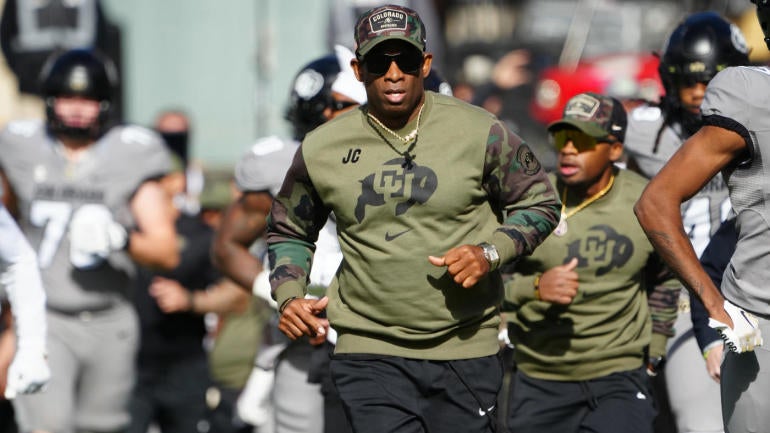
Colorado coach Deion Sanders made waves with his rapid roster turnover last year, netting 72 new additions before his first season with the Buffaloes. Of those, 21 came from the high school ranks -- a rather standard prep recruiting class in the modern age of college football. Following that tone-setting first offseason, the Buffaloes were relatively quiet this year.
With the dust settled following February's traditional national signing day, a peek at Colorado's class reveals Sanders and and his staff only signed seven high school players. It is by far the smallest recruiting class among power conference programs and sits at 117th in the 247Sports Team Composite -- right behind the likes of Hawaii, Connecticut and Buffalo.
Don't let the ranking fool you, though; Colorado eschewed quantity for quality. Four of the Buffaloes' seven signees rate as four-star prospects. Three of those players sit inside the top 100, highlighted by five-star offensive lineman Jordan Seaton, who is the No. 1 interior offensive lineman and No. 13 overall prospect in his class.
This marks the second straight year that Sanders has signed a five-star prospect from the prep level. Still, no matter how impressive the list of names might be, a seven-player signing class is certainly strange. Let's take a look at why Sanders may have taken such a light approach to high school recruiting, and whether the transfer-first method he often employs is a sustainable model.
Transfers take priority again
Even when Sanders was adding 70-plus new players to his roster, an overwhelming majority of those came from the transfer portal. A year after signing a robust 51 transfers in 2023, Colorado added just under half that number with 24 transfers headed to Boulder ahead of the 2024 season.
That's still second most among power conference schools, just behind Louisville's whopping 26-player transfer class. Seven of those transfers grade out as four stars in 247Sports' rankings. By comparison, Colorado lost just 13 players to the portal, in stark contrast to the 56-player exodus from last year.
Obviously, Colorado is in a much better place than it was a year ago. Factoring in the six early signees and transfers that had already joined the program, the Buffaloes had 83 of their available 85 scholarships filled ahead of the February signing period. Linebacker Kyeran Garcia brought that number to 84, leaving just one scholarship spot available as the Buffs set their eyes on offseason workouts and spring practice.
Does the transfer model work?
It's clear that Sanders prioritizes instant-impact players that have been battle tested in college. Well over 60% of Colorado's roster consists of either former transfers or recent additions via the portal. Sanders has even done a good job finding transfers that have multiple years of eligibility, giving those players more time to gain experience in his system and mesh with the culture.
But this strategy might reach an inflection point this offseason. Barring surprising redshirt decisions, Colorado has 28 players that will be completely out of eligibility -- including quarterback Shedeur Sanders. Seven players from the 2024 transfer haul only have one year to play. Beyond that, younger names like two-way superstar Travis Hunter will be eligible to declare for the 2025 NFL Draft.
With that level of attrition, Sanders' roster philosophy will be put to the test. He could -- and probably will -- go back to the portal for answers, but it's much easier to build a program with in-house options. Consistency is key in college football, especially from a team-building perspective.
Elite programs work hard at player retention and development while selectively using the portal to supplement and address specific glaring areas of need. However, Sanders didn't have the luxury of inheriting a stable situation at Colorado, so it makes sense that he would use the portal for an injection of talent early in his tenure.
The 2024 high school recruiting cycle was a great step in terms of talent acquisition; few schools boast a better ratio between class size and blue-chip prospects than Colorado. But Sanders may need to prioritize high school recruiting a bit more if he truly wants to build the Buffaloes into a consistent competitor.

















